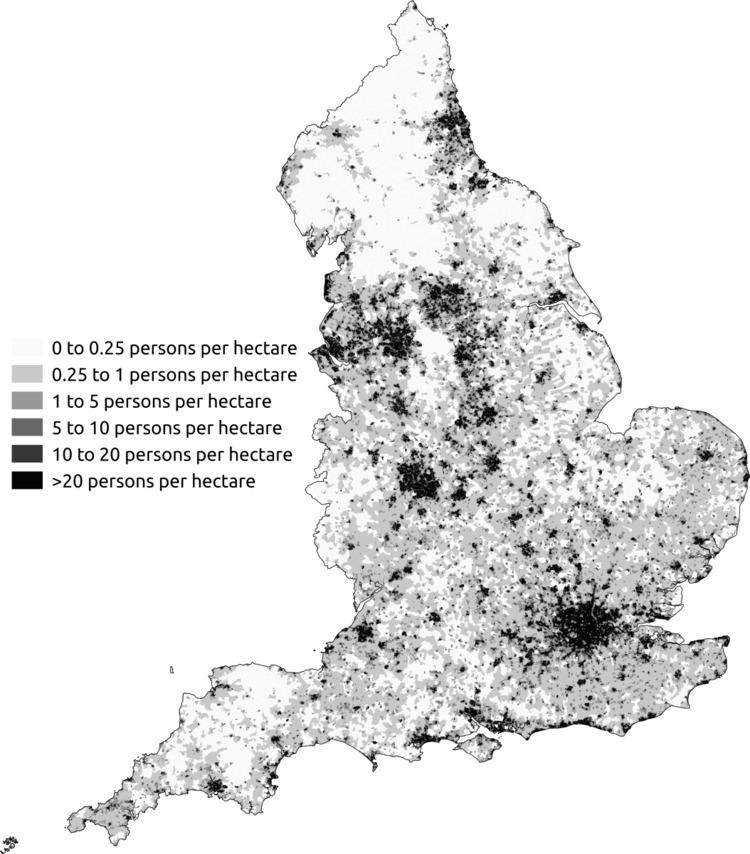 | ||
The demography of England has since 1801 been measured by the decennial national census, and is marked by centuries of population growth and urbanisation. Due to the lack of authoritative contemporary sources, estimates of the population of England for dates prior to the first census in 1801 vary considerably.
Contents
Population
The population at the time of the 2011 census was 53,012,456
Place of birth
Places of birth given by respondents to the 2001 and 2011 censuses were as follows:
Below are the 5 largest foreign-born groups in England according to 2014 ONS estimates.
Age
The data below is based on the 2011 census. In 2001, the mean age of England's population was 38.60, and the median age was 37.00.
Life expectancy at birth
Ethnicity
The 2001 and 2011 censuses recorded the following ethnic groups:
Notes for table above
Source: 2001 Census KS06 Ethnic group: Key Statistics for local Authorities and 2011 Census: KS201EW Ethnic group: local authorities in England and Wales.Languages
The most common main languages spoken in England according to the 2011 census are shown below.
Religion
Respondents to the 2001 and 2011 censuses gave their religions as follows:
